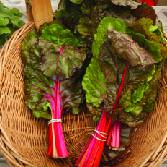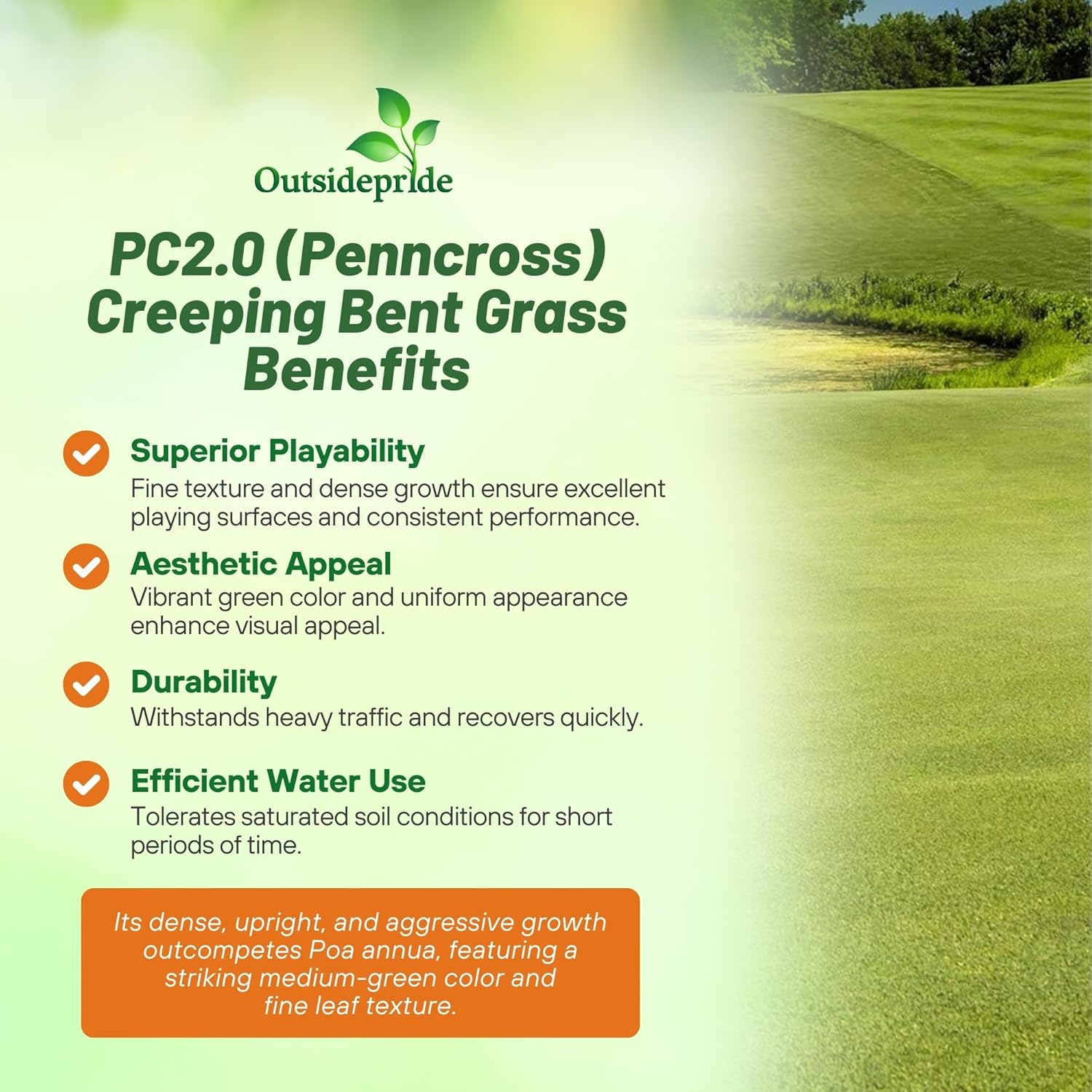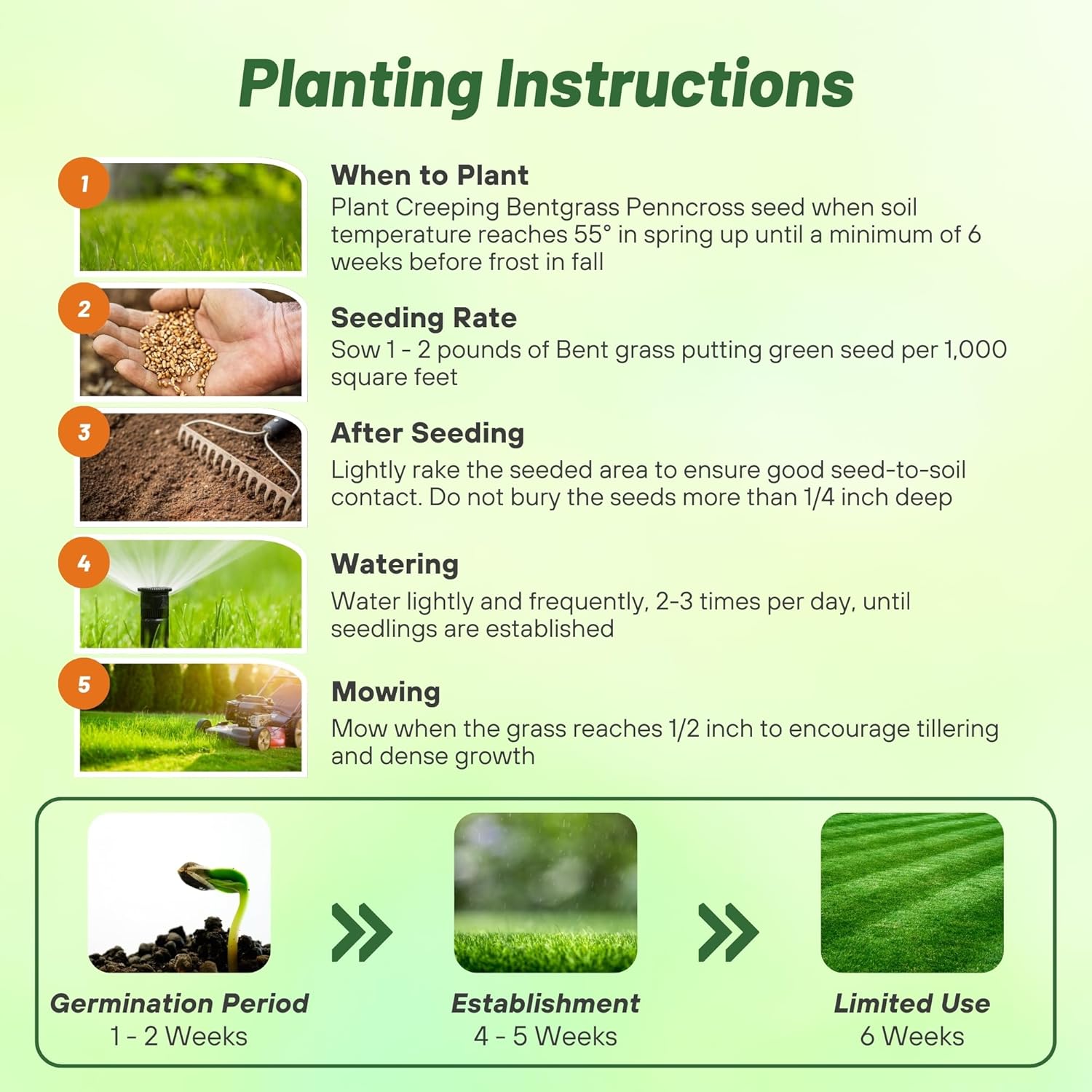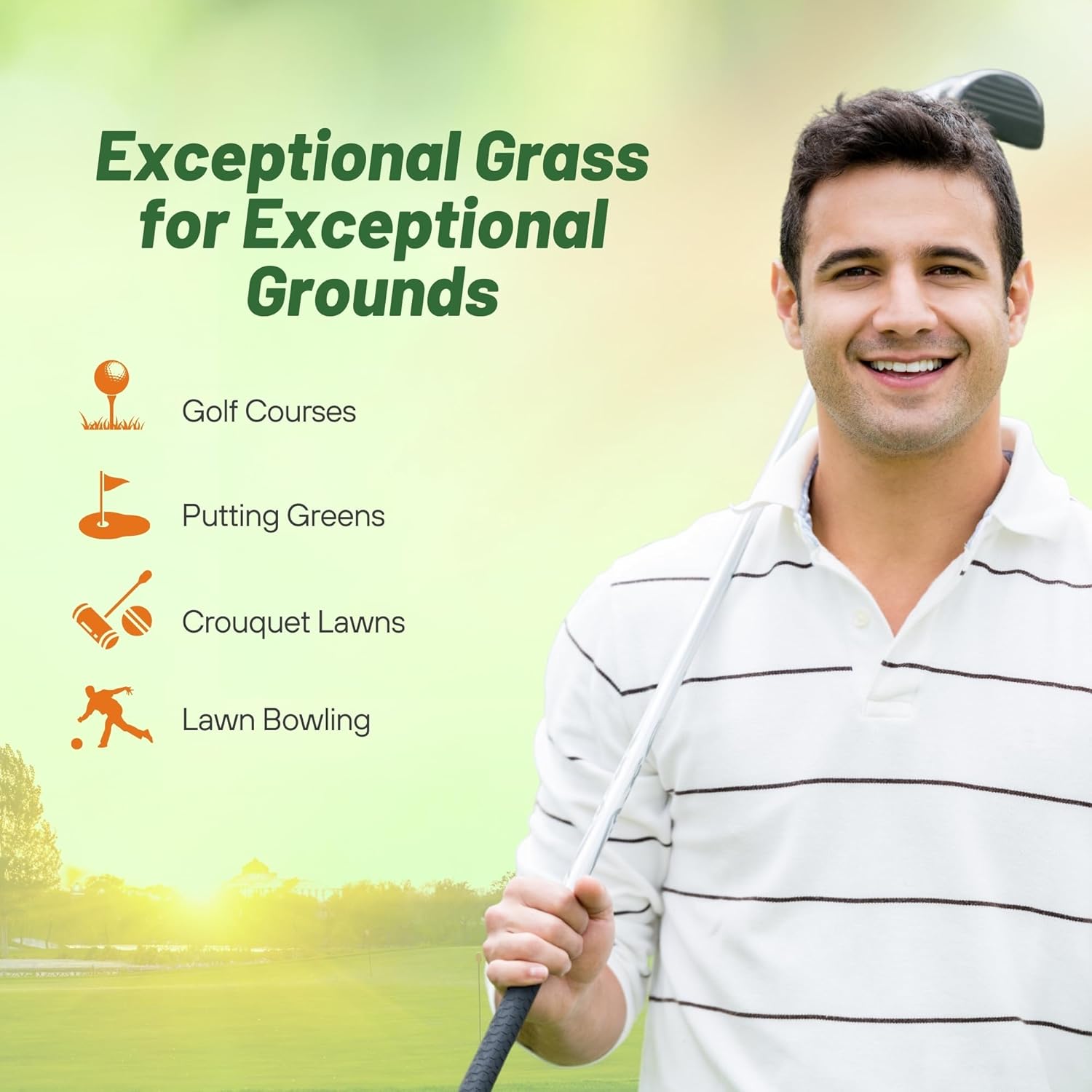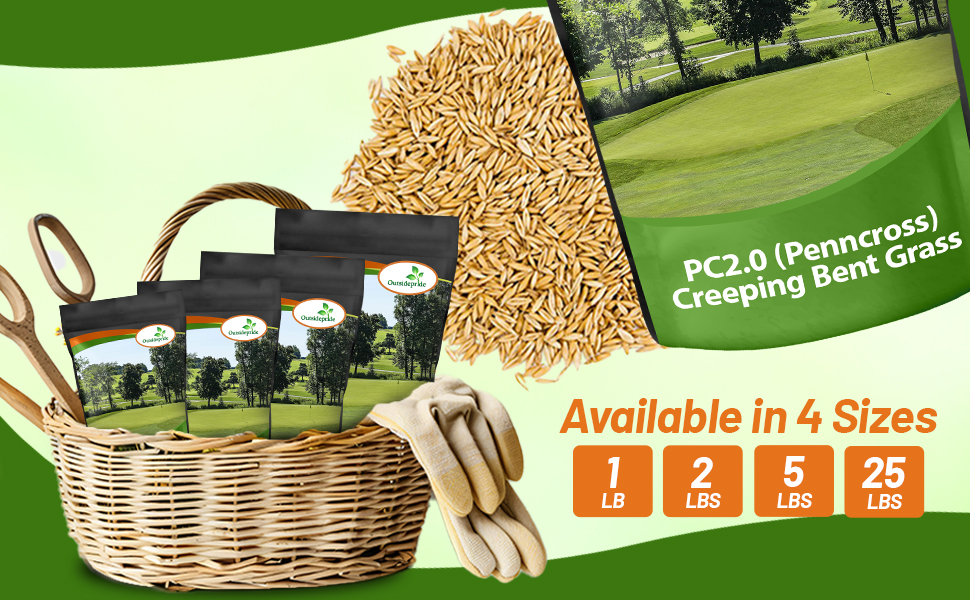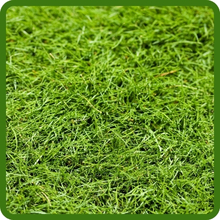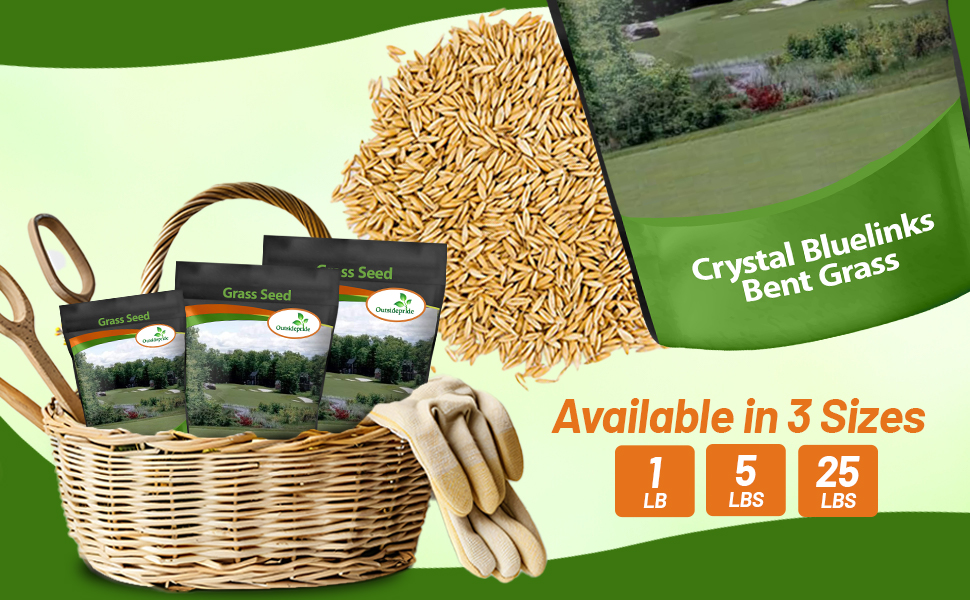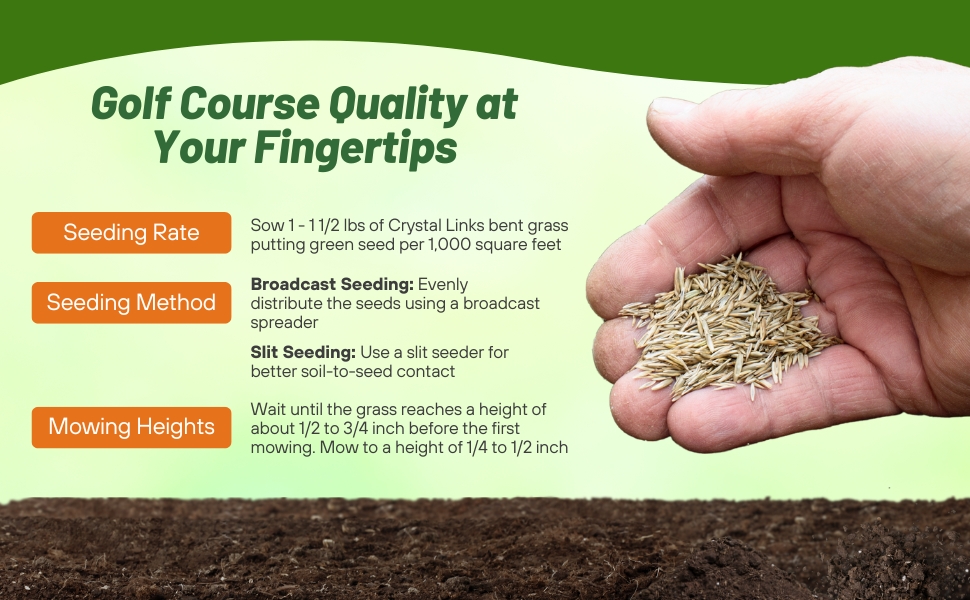Planting Guide
SOWING TEMPERATURE
55F+
WHEN TO PLANT
Spring 55F or up to 6 weeks before first frost
AVERAGE GERM TIME
6 - 10 days
DAYS TO FIRST MOWING
21 - 30 Days
PLANTING DEPTH
Surface to 1/8 Inch
SOWING METHOD
Broadcast or Drill
MOWING HEIGHT
1/4 - 1/2 Inch
ENVIRONMENT
Full Sun to Partial Shade
ZONES
3 - 8
Grass Specifications
IDEAL FOR
Lawns, Golf Courses, Putting Greens
PLANT CHARACTERISTICS
Fine Bladed, Dark Green
ESTABLISHMENT RATE
Moderate to Fast
MOISTURE REQUIREMENTS
High
ACIDIC SOIL TOLERANCE
Medium to High
SALINITY TOLERANCE
High
COLD TOLERANCE
Low
SHADE TOLERANCE
Poor to Moderate
WEAR TOLERANCE
Low
THATCH TENDANCY
High
FERTILITY NEEDS
High
SEASON
Perennial
USDA Grass Seed Guide
We'll show you the following information
Grasses Used in Your State You can look up to see what the most popular grasses used in your state are.
USDA Zone Map This is a USDA zone map specifically for your state so you can tell exactly what zone you are in.
Best Grasses For Your State This feature gives you a list of all the grasses that Outsidepride.com carries that are good for your state.
Grass Characteristics Start fine tuning your grass selection based on what priorities you are looking for: drought, shade, texture, water use, etc.









T-1 creeping bent grass has emarkable genetic color and consistently ranked #1 in NTEP trials for its dark green color. The hue is distinctive. T-1 bentgrass presents a rich, ivy-toned appearance. Even the man who developed the variety wondered if T-1 would be embraced by agronomic traditionalists. "I thought it would be too dark for people," says Dr. Doug Brede, research director for Jacklin Seed. "But everybody loves it because you can grow it with less nitrogen and have that nice T-1 color. It never really turns pale on you."
Its dark green color is not the only characteristic that T-1 is known for. The plants that went into T-1 excelled at keeping Poa at bay. In fact, they made visible gains against Poa every year. The T-1 variety has been planted on more new golf courses worldwide in the last 5 years than any other bentgrass.
T-1 offers championship quality without championship maintenance. Unlike some earlier bents generations, T-1 was bred and optimized with the mid-budget golf course in mind. T-1 provides tournament quality golf for every golf courses and is forgiving when climate or cultural practices are not ideal. Originating from selections found on 40 to 100-year-old golf course bentgrass stands in the Southern United States, crossed with dwarf-type cultivars found in Oregon, T-1 possesses unique and versatile genetics. These diverse genetics allow T-1 to thrive under varying management practices and provide aggressive stoloniferous growth.
Characteristics
- Tenacious ground coverage – The single biggest factor that sets T-1 apart is ground coverage. T-1 retains ground coverage under some incredibly tough growing conditions.
- Aggressive against Poa – Jacklin Seed (breeder) tests every single bent strain in our breeding program against Poa annua. If it can’t hold up against Poa, we pitch it. All of the plants that went into T-1 excelled at keeping Poa at bay. In fact, they made visible gains against Poa every year.
- T-1 is the "Forgiving Bent" – Unlike some earlier bents, T-1 was bred and optimized with the mid-budget golf course in mind. T-1 provides tournament-quality golf for every golf course.
- Breeding – Half of the breeding lines in T-1 from elite selections in the variety, Putter. The other half of its parent germplasm originated from New England golf course collections. T-1’s breeder block was assembled using clonal rows, similar to how Penncross and Putter were constructed.
- Turf growth habit – T-1 sets a new standard for bentgrass tiller density, providing a rich, luxurious putting surface. Yet it is remarkably easy to manage with very low thatch production. Ordinary masonry sand can be used in topdressing mixes.
Applications
Seeding Rate & Planting Time
- New turf: Sow 1 - 2 pounds of Bent grass putting green seed per 1,000 square feet
- Plant Creeping Bentgrass Penncross seed when soil temperature reaches 55 degrees in spring up until a minimum of 6 weeks before frost in fall
- Cover the Bentgrass seed to a depth not exceeding ¼" and keep seedlings moist until well rooted. Germination will take place in 7 - 15 days depending on soil temperatures, and the first mowing may be expected within 30 days, or when the plants have sufficiently rooted. Mow at a 3/4" height or lower until turf is established. Limited use of the Creeping Bentgrass putting green area can be expected in 6 weeks.
Certification
The Grass Seed Certification program establishes the genetic purity and germination of varieties, blends, and mixtures. The certification process begins with the proper field history before production and continues through the bagging of a grass seed lot with every step independently verified by Seed Certification personnel. Each bent grass seed lot to be certified is sampled by Certification personnel and tested in the state seed laboratory, so the grass seed you buy is the seed that was tested If even one standard in this process failed, the lot is uncertified. You can rest assured that your bent grass seed is certified!
A-List Turf
T-1 is currently certified with the Alliance for Low Input Sustainable Turf. to ensure the integrity and independence of the program, testing is conducted by nationally recognized cooperators and selected on a regional basis to insure environmental adaptability. These cooperators also participate on an advisory board to further influence protocols. Participation in the independent and geographically diverse National Turfgrass Evaluation Program (NTEP) is strongly encouraged. Universities involved include: Purdue, University of California, North Carolina State, Rutgers, Utah State, University of Wisconsin, Michigan State, University of Connecticut, Virginia Tech, Ohio State, Oregon State, & Iowa State. To learn more, visit their website at: A-listturf.org
Grasses Used in Your State
You can look up to see what the most popular grasses used in your state are.
USDA Zone Map
This is a USDA zone map specifically for your state so you can tell exactly what zone you are in.
Best Grasses For Your State
This feature gives you a list of all the grasses that Outsidepride.com carries that are good for your state.
Grass Characteristics
Start fine tuning your grass selection based on what priorities you are looking for: drought, shade, texture, water use, etc.
USDA Grass Seed Guide
We'll show you the following information
Planting Guide
SOWING TEMPERATURE
55+
WHEN TO PLANT
Spring 55F or up to 6 weeks before first frost
AVERAGE GERM TIME
6 - 10 days
DAYS TO FIRST MOWING
21 - 30
PLANTING DEPTH
Surface to 1/8 inch
SOWING METHOD
Broadcast and rake in
MOWING HEIGHT
1/4 - 1/2 inch
ENVIRONMENT
Full Sun
ZONES
4 - 10
Grass Specifications
IDEAL FOR
Lawns, Golf Courses, Putting Greens
PLANT CHARACTERISTICS
Fine Bladed, Dark Green
ESTABLISHMENT RATE
Moderate to Fast
MOISTURE REQUIREMENTS
High
ACIDIC SOIL TOLERANCE
Medium to High
SALINITY TOLERANCE
High
COLD TOLERANCE
Low
SHADE TOLERANCE
Poor to Moderate
WEAR TOLERANCE
Low
THATCH TENDANCY
High
FERTILITY NEEDS
High
SEASON
Perennial
USDA Grass Seed Guide
We'll show you the following information
Grasses Used in Your State You can look up to see what the most popular grasses used in your state are.
USDA Zone Map This is a USDA zone map specifically for your state so you can tell exactly what zone you are in.
Best Grasses For Your State This feature gives you a list of all the grasses that Outsidepride.com carries that are good for your state.
Grass Characteristics Start fine tuning your grass selection based on what priorities you are looking for: drought, shade, texture, water use, etc.









V8 is a brand new powerhouse creeping bentgrass developed for any golf course wanting that world class look. V8 is a hybrid between two elite breeding lines selected for its close cut tolerance and improved dollar spot resistance. V8 has been seeded on golf courses worldwide and has received excellent independent evaluations in current NTEP (National Turfgrass Evaluation Program) putting green trials comparing it side by side with other commercial and experimental bentgrasses.
Characteristics
- V8 earned the #1 ranking for turf quality in NTEP's putting green trials for LPI Group 1 with locations in Indiana, Kentucky, Minnesota, Pennsylvania, Utah, Virginia and Washington state topping Penn A-1, Declaration and all other varieties
- Dollar Spot resistance statistically equal to the top variety in NTEP
- V8 has one of the finest leaf textures of any creeping bentgrass
- Greens up in the spring earlier than Penncross for additional weeks of golf play
- V8 is a medium dark green color. Darker than Penncross and lighter than T-1
- Color persists well into the autumn with better than average frost tolerance
- Tolerates wide range of mowing heights from putting green to fairway. Some courses have mowed as low as 0.08" (2mm)
- Smooth recovery from aerification
Applications
V8 is a versatile bentgrass and is used on tees, fairways and greens. Its low thatch production makes it an excellent selection for wide areas where routine maintenance can be labor intensive such as tees and fairways. With superior heat tolerance, V8 thrives across the cool, temperate regions of the world, and it is adapted well into the transition zone between warm and cool-season areas. Providing earlier spring green- up and holding color longer into the fall, it allows for a more aesthetic appeal longer playing season. V8 and T-1 can be blended to allow for even more versatility, combining their traits to provide a stronger healthier stand that persists in challenging environments and periods of excessive use.
Seeding Rate & Planting Time
- New turf: Sow 1 - 2 pounds of Bent grass putting green seed per 1,000 square feet
- Plant Creeping Bentgrass Penncross seed when soil temperature reaches 55 degrees in spring up until a minimum of 6 weeks before frost in fall
- Cover the Bentgrass seed to a depth not exceeding ¼" and keep seedlings moist until well rooted. Germination will take place in 7 - 15 days depending on soil temperatures, and the first mowing may be expected within 30 days, or when the plants have sufficiently rooted. Mow at a 3/4" height or lower until turf is established. Limited use of the Creeping Bentgrass putting green area can be expected in 6 weeks.
Certification
The Grass Seed Certification program establishes the genetic purity and germination of varieties, blends, and mixtures. The certification process begins with the proper field history before production and continues through the bagging of a grass seed lot with every step independently verified by Seed Certification personnel. Each bent grass seed lot to be certified is sampled by Certification personnel and tested in the state seed laboratory, so the grass seed you buy is the seed that was tested If even one standard in this process failed, the lot is uncertified. You can rest assured that your bent grass seed is certified!
A-List Turf
V8 is currently certified with the Alliance for Low Input Sustainable Turf. to ensure the integrity and independence of the program, testing is conducted by nationally recognized cooperators and selected on a regional basis to insure environmental adaptability. These cooperators also participate on an advisory board to further influence protocols. Participation in the independent and geographically diverse National Turfgrass Evaluation Program (NTEP) is strongly encouraged. Universities involved include: Purdue, University of California, North Carolina State, Rutgers, Utah State, University of Wisconsin, Michigan State, University of Connecticut, Virginia Tech, Ohio State, Oregon State, & Iowa State. To learn more, visit their website at: A-listturf.org
Grasses Used in Your State
You can look up to see what the most popular grasses used in your state are.
USDA Zone Map
This is a USDA zone map specifically for your state so you can tell exactly what zone you are in.
Best Grasses For Your State
This feature gives you a list of all the grasses that Outsidepride.com carries that are good for your state.
Grass Characteristics
Start fine tuning your grass selection based on what priorities you are looking for: drought, shade, texture, water use, etc.
USDA Grass Seed Guide
We'll show you the following information
Planting Guide
SOWING TEMPERATURE
55F+
WHEN TO PLANT
Spring 55F or up to 6 weeks before first frost
AVERAGE GERM TIME
6 - 10 days
DAYS TO FIRST MOWING
21 - 30 days
PLANTING DEPTH
Surface to 1/8 inch
SOWING METHOD
Broadcast and rake in
MOWING HEIGHT
1/4 - 1/2 inch
ENVIRONMENT
Full Sun
ZONES
4 - 10
Grass Specifications
IDEAL FOR
Lawns, Golf Courses, Putting Greens
PLANT CHARACTERISTICS
Fine Bladed, Dark Green
ESTABLISHMENT RATE
Moderate to Fast
MOISTURE REQUIREMENTS
High
ACIDIC SOIL TOLERANCE
Medium to High
SALINITY TOLERANCE
High
COLD TOLERANCE
Low
SHADE TOLERANCE
Poor to Moderate
WEAR TOLERANCE
Low
THATCH TENDANCY
High
FERTILITY NEEDS
High
SEASON
Perennial
USDA Grass Seed Guide
We'll show you the following information
Grasses Used in Your State You can look up to see what the most popular grasses used in your state are.
USDA Zone Map This is a USDA zone map specifically for your state so you can tell exactly what zone you are in.
Best Grasses For Your State This feature gives you a list of all the grasses that Outsidepride.com carries that are good for your state.
Grass Characteristics Start fine tuning your grass selection based on what priorities you are looking for: drought, shade, texture, water use, etc.
















